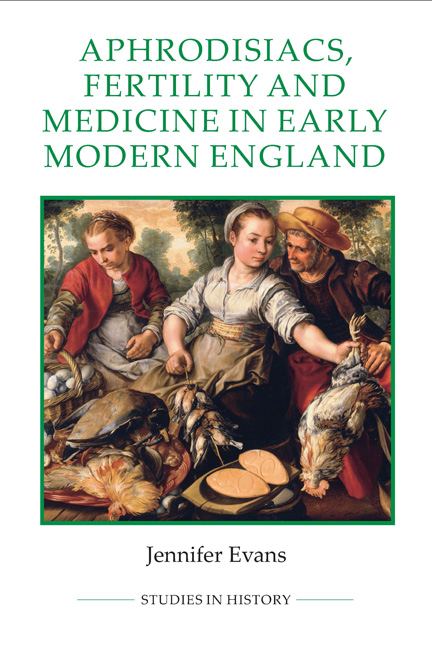Book contents
- Frontmatter
- Contents
- List of illustrations
- Acknowledgements
- Abbreviations
- Note on the text
- Glossary
- Introduction
- 1 Texts, readers and markets
- 2 The reproductive and the infertile body
- 3 Provoking lust and promoting conception
- 4 Enchanted privities and provokers of lust
- 5 Aphrodisiacs, miscarriage and menstruation
- Conclusion
- Bibliography
- Index
1 - Texts, readers and markets
Published online by Cambridge University Press: 05 November 2014
- Frontmatter
- Contents
- List of illustrations
- Acknowledgements
- Abbreviations
- Note on the text
- Glossary
- Introduction
- 1 Texts, readers and markets
- 2 The reproductive and the infertile body
- 3 Provoking lust and promoting conception
- 4 Enchanted privities and provokers of lust
- 5 Aphrodisiacs, miscarriage and menstruation
- Conclusion
- Bibliography
- Index
Summary
In The ten pleasures of marriage (1682) a young woman worried that she had been married three months and was yet to get pregnant. She began to gossip with her neighbours and sought their advice about the virility and sexual abilities of her husband:
Whosoever she speaks with every one pities her, and gives her their advice: And the best sort will at the least say to her, I would oftentimes treat my husband with such sort of spices as were good for my self, viz. Oisters, Egs, Coxcombs, sweet breads, Lam-stones, Caveer [sic], &c. and counsell him every morning to go to the Coffe-house [sic] and drink some Chocolate.
In this humorous tale of the difficulties of marriage, the author makes it clear that knowledge about aphrodisiacs, good for both the husband and the wife, is part of women's everyday sexual and medical knowledge. This book will demonstrate that this indeed was the case, and that a shared understanding of what foods, and other substances, were aphrodisiacs and how they functioned could be found in a variety of printed and manuscript sources from 1550 to 1780.
To do so it will use a broad survey of printed medical literature, including general treatises and those specialising in generation, botanical texts, popular and ephemeral literature, medical advertisements and manuscript recipe books. This is an approach to the study of cultural ideas about the body that has already been successfully utilised by scholars like Bethan Hindson.
- Type
- Chapter
- Information
- Publisher: Boydell & BrewerPrint publication year: 2014



